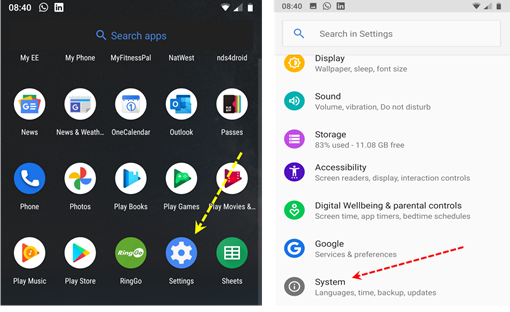3.3 Keeping your software up to date
This section is part of the amber and green pathways.
Computer operating systems and application programs are so large that they inevitably contain bugs, some of which could compromise your security.
The majority of companies issue regular updates to their programs to fix known problems. Major operating systems and some application packages (such as Microsoft Office and the Adobe productivity suite) automate most of the process of updating software by automatically checking for updates, prompting the user to install them and then actually performing the update itself. This process is sometimes called ‘patching’.
Activity 2 Keeping your software up to date
Most electronic devices we use, such as smartphones and smart TVs, have an operating system (OS) that drives them. There are application programs (apps) that run on the OS to provide the various functionalities you use.
Devices that run the Android OS have a “Settings” application that performs several settings relating to the OS functions. Under this, the “System” option provides a facility to check for OS updates and to update the OS. However, most operating systems have a facility to notify you of available updates. and indicate the urgency of applying the update to the OS.
Similarly, in iOS (on iPhones and iPads from Apple), the sequence is Settings, General, Software Update.
Apps typically send “update” notifications (a message that an update is available) to the OS on the device and the OS typically downloads and installs the update, if the device has connectivity to the Internet.
Now, attempt to identify these settings on your smartphone. Is the OS on your smartphone updated? Can you identify the OS label/version of the latest update?
Please complete Quick poll #13 [Tip: hold Ctrl and click a link to open it in a new tab. (Hide tip)] now.
Open the poll in a new window or tab then come back here when you’re done.



